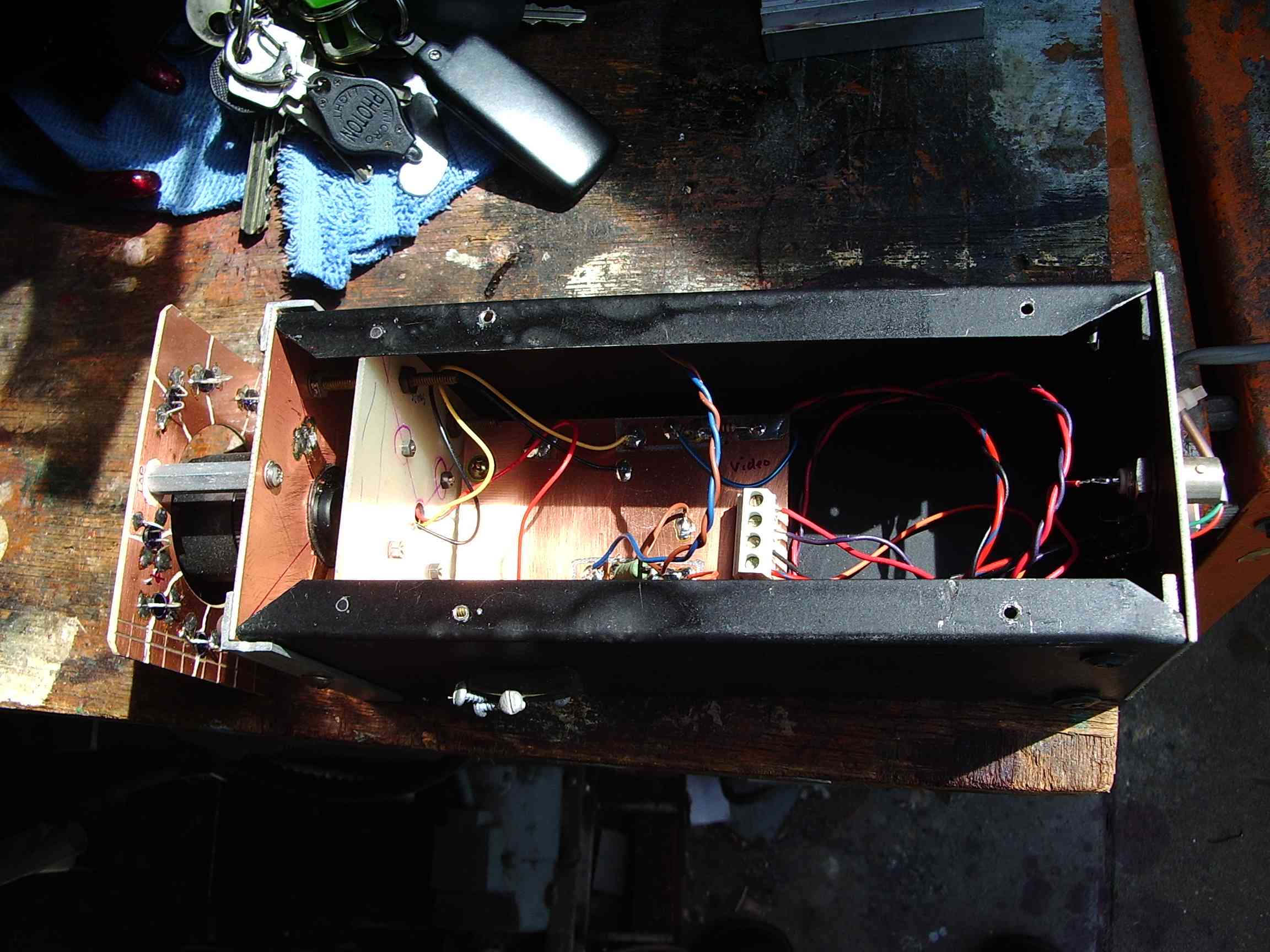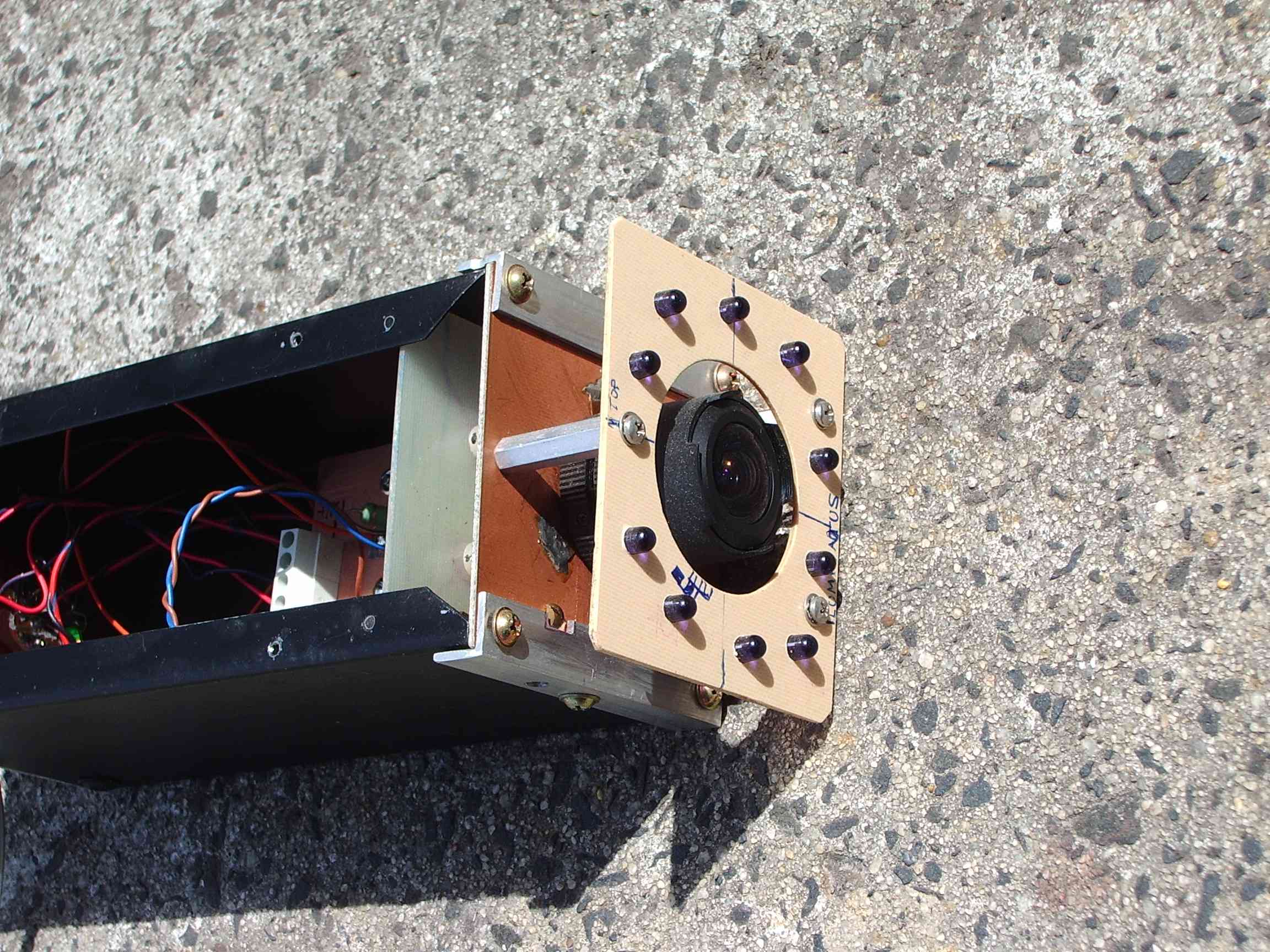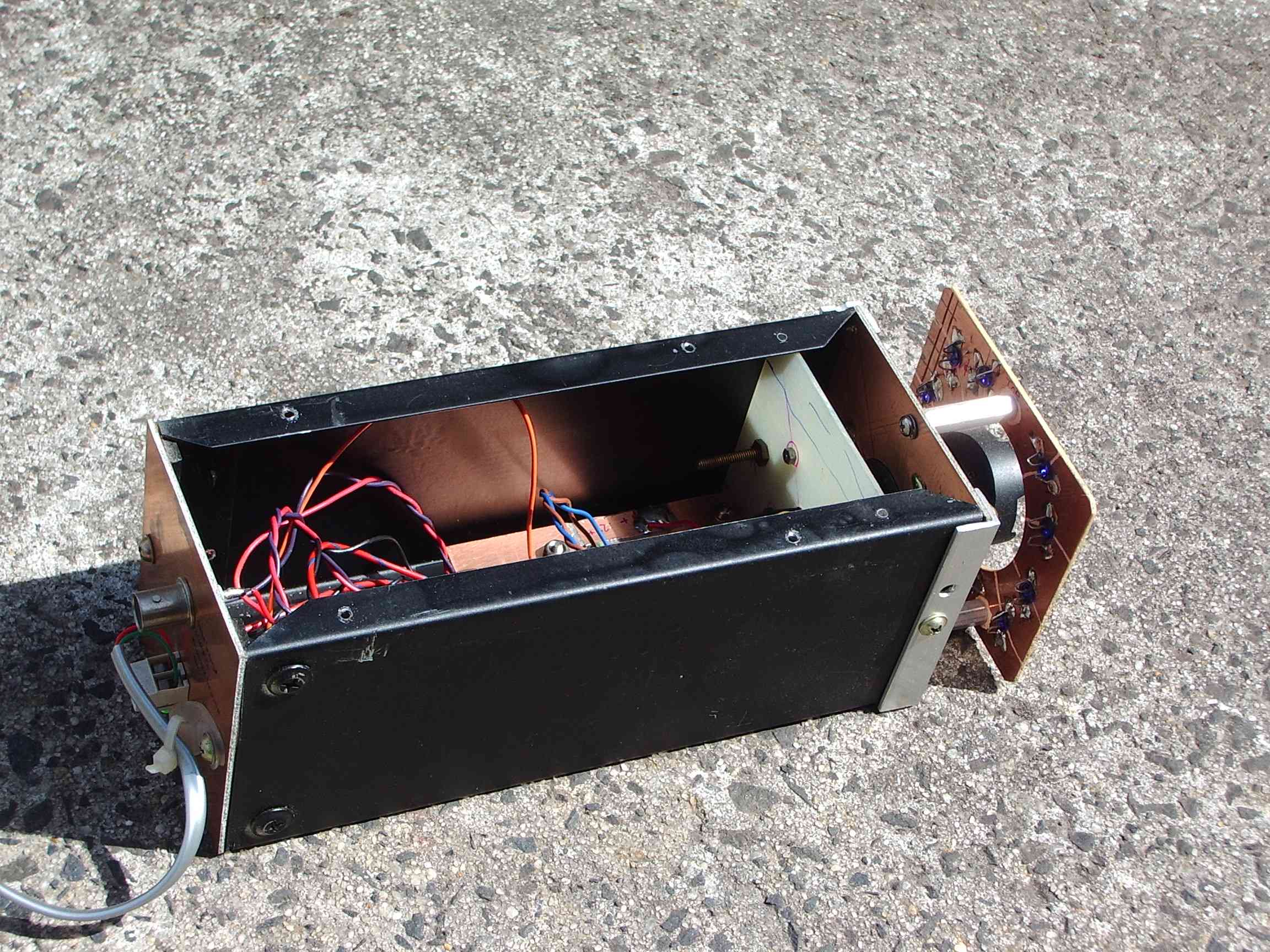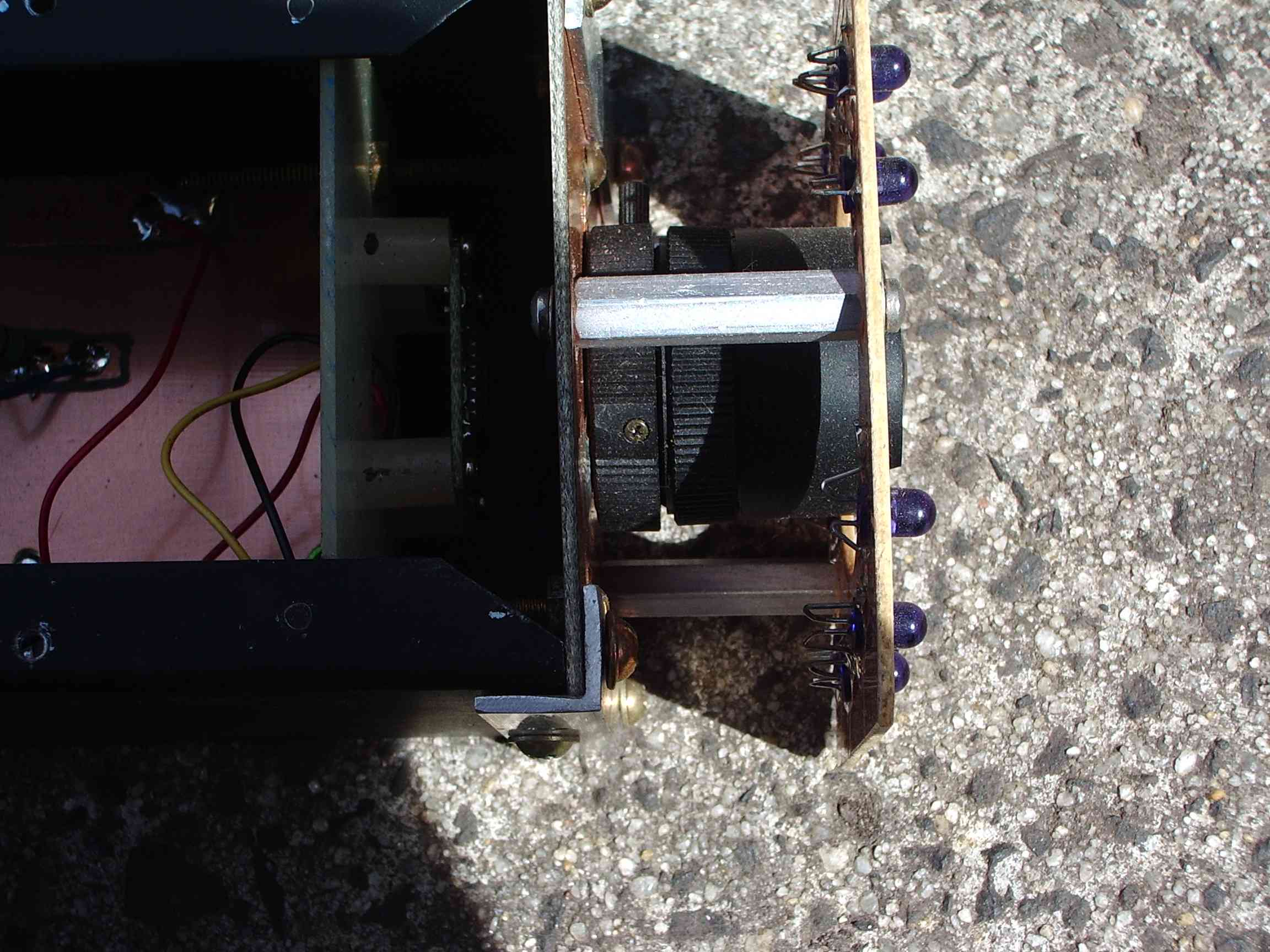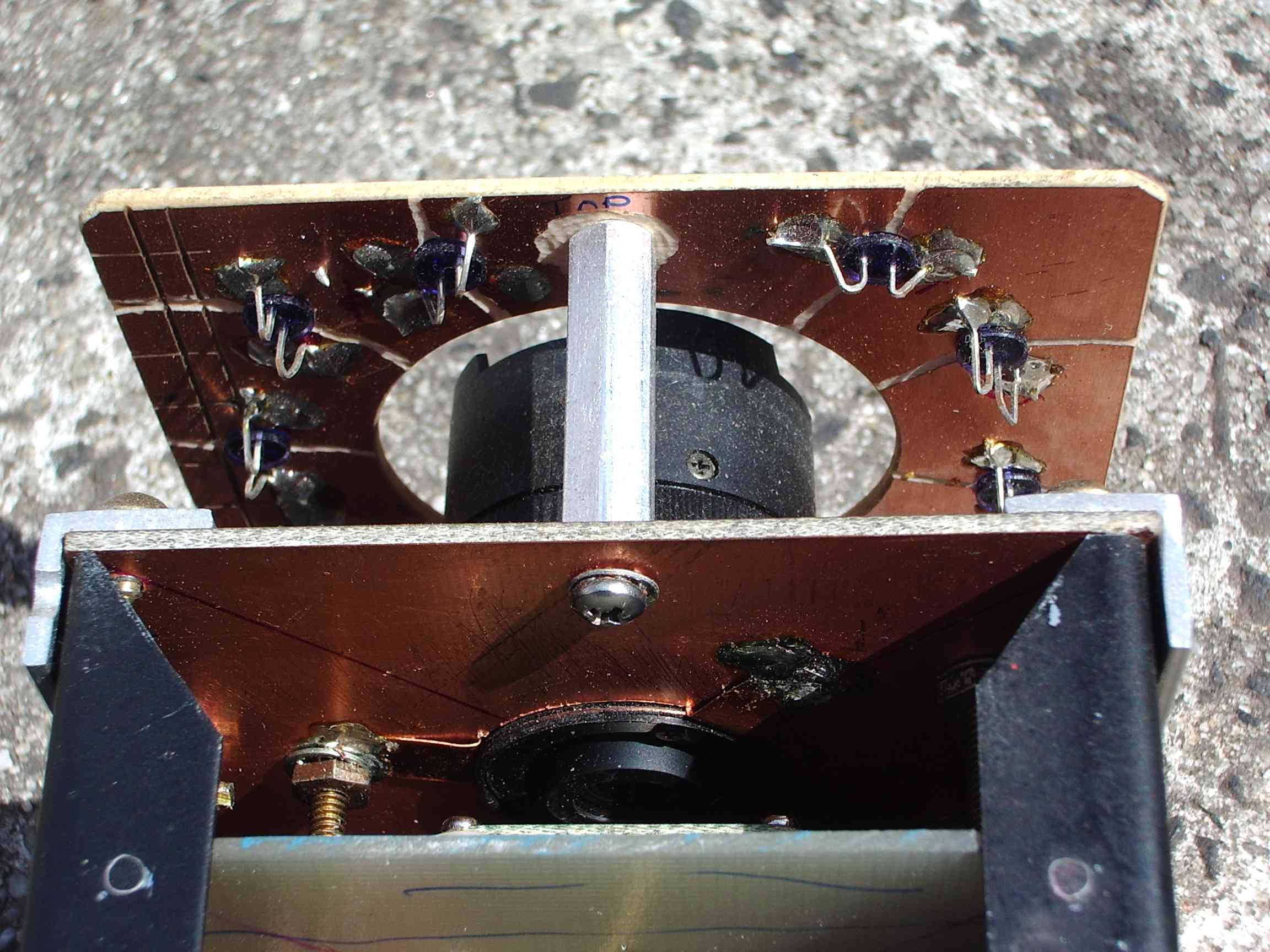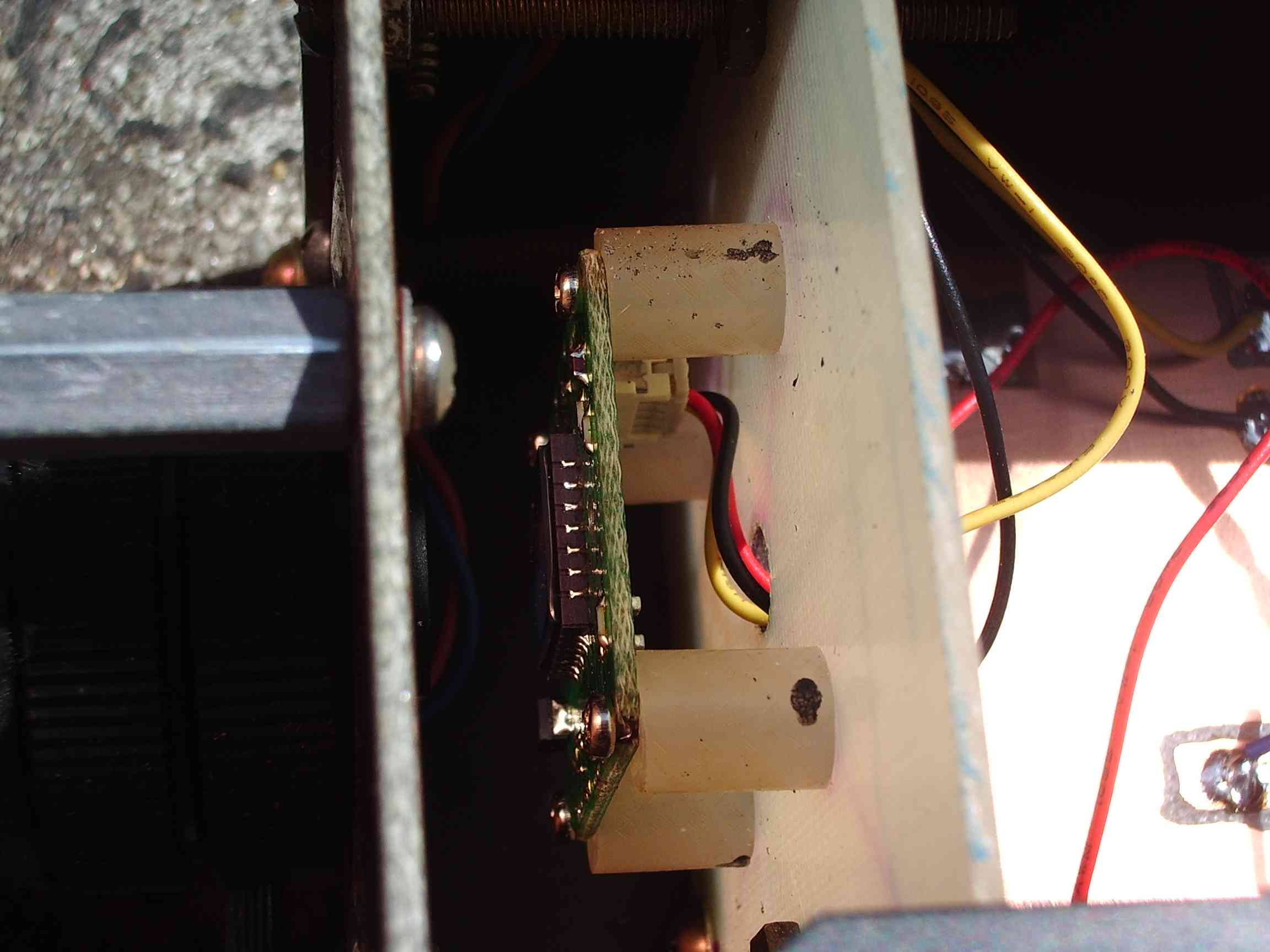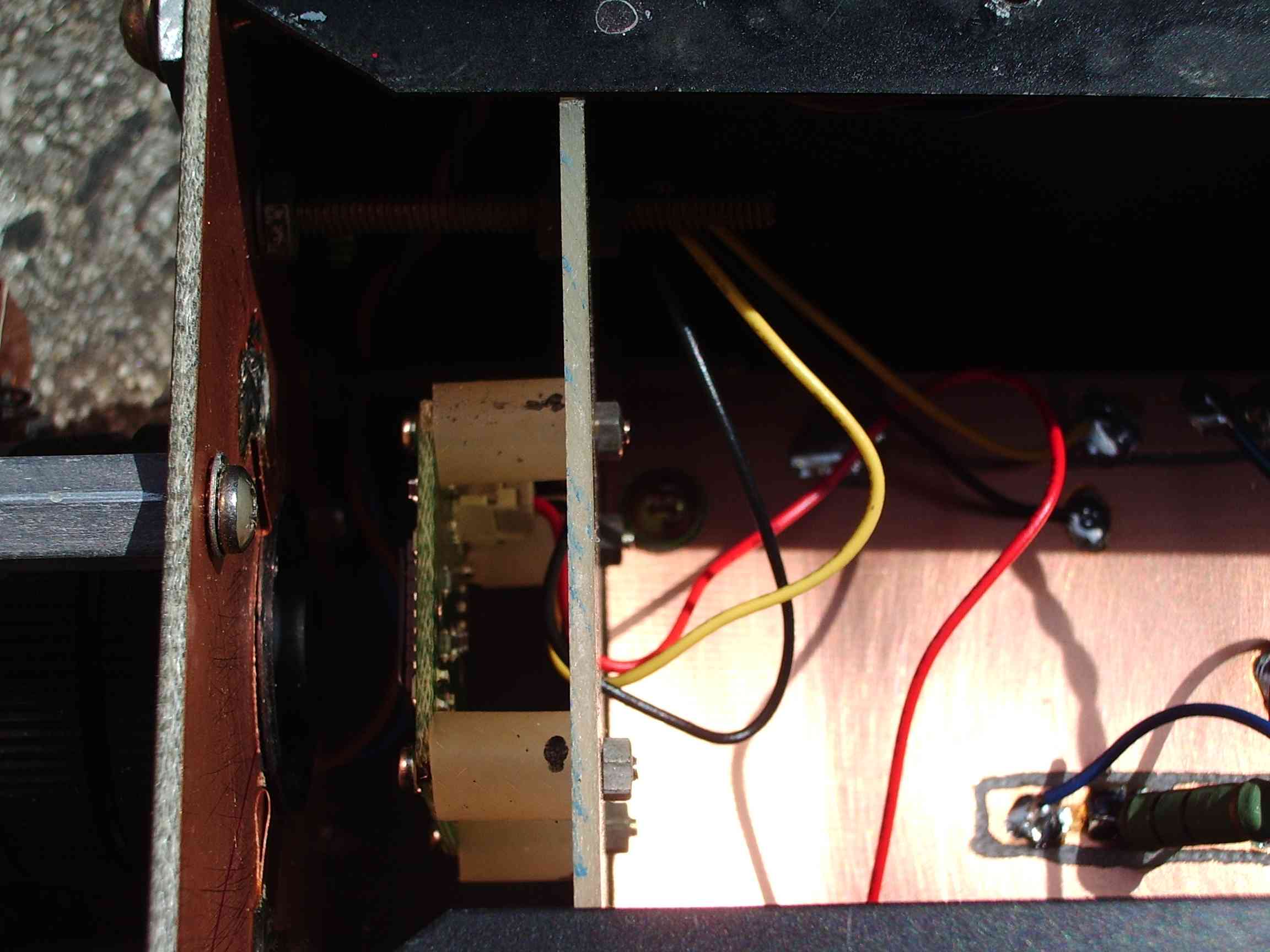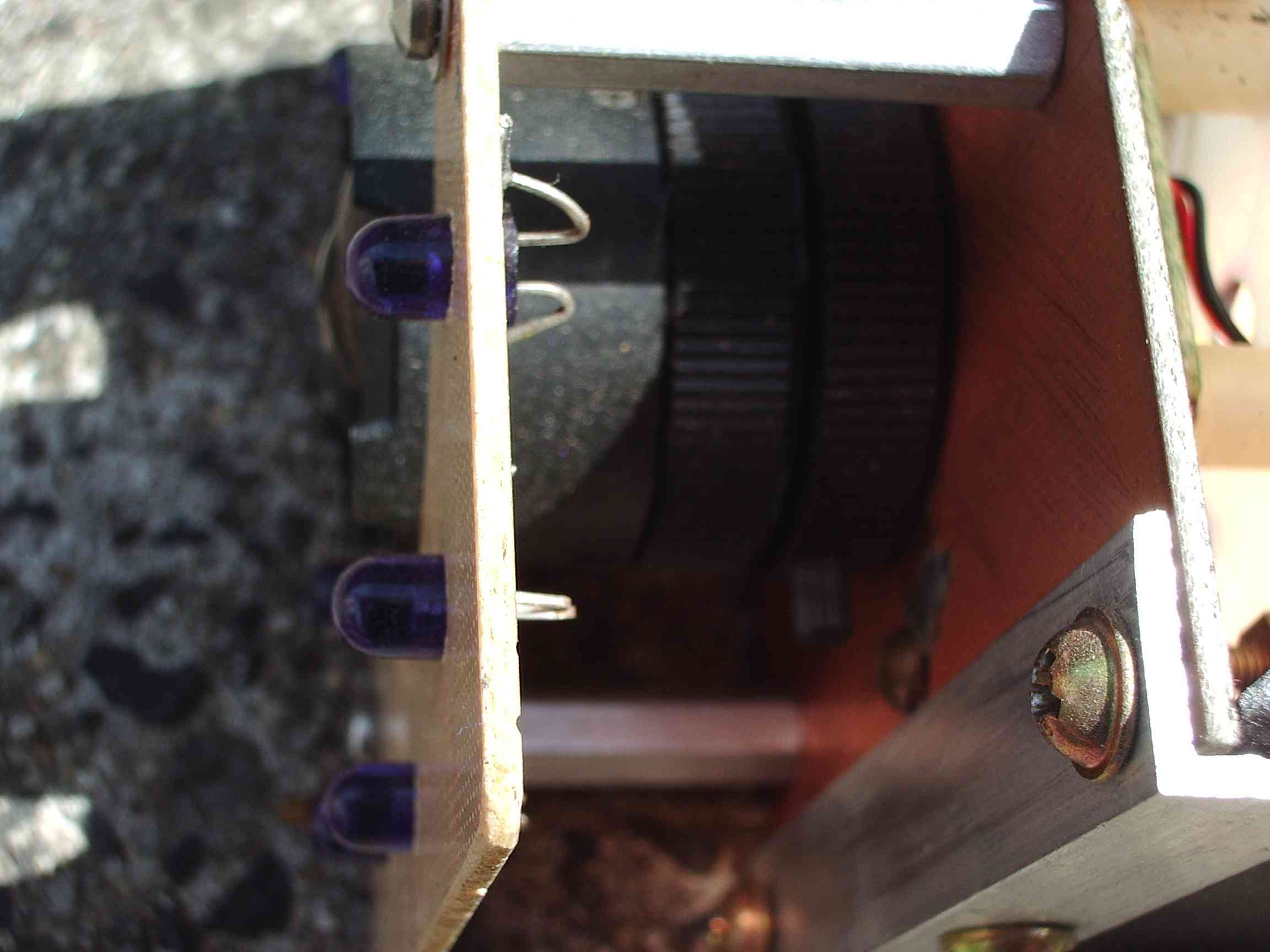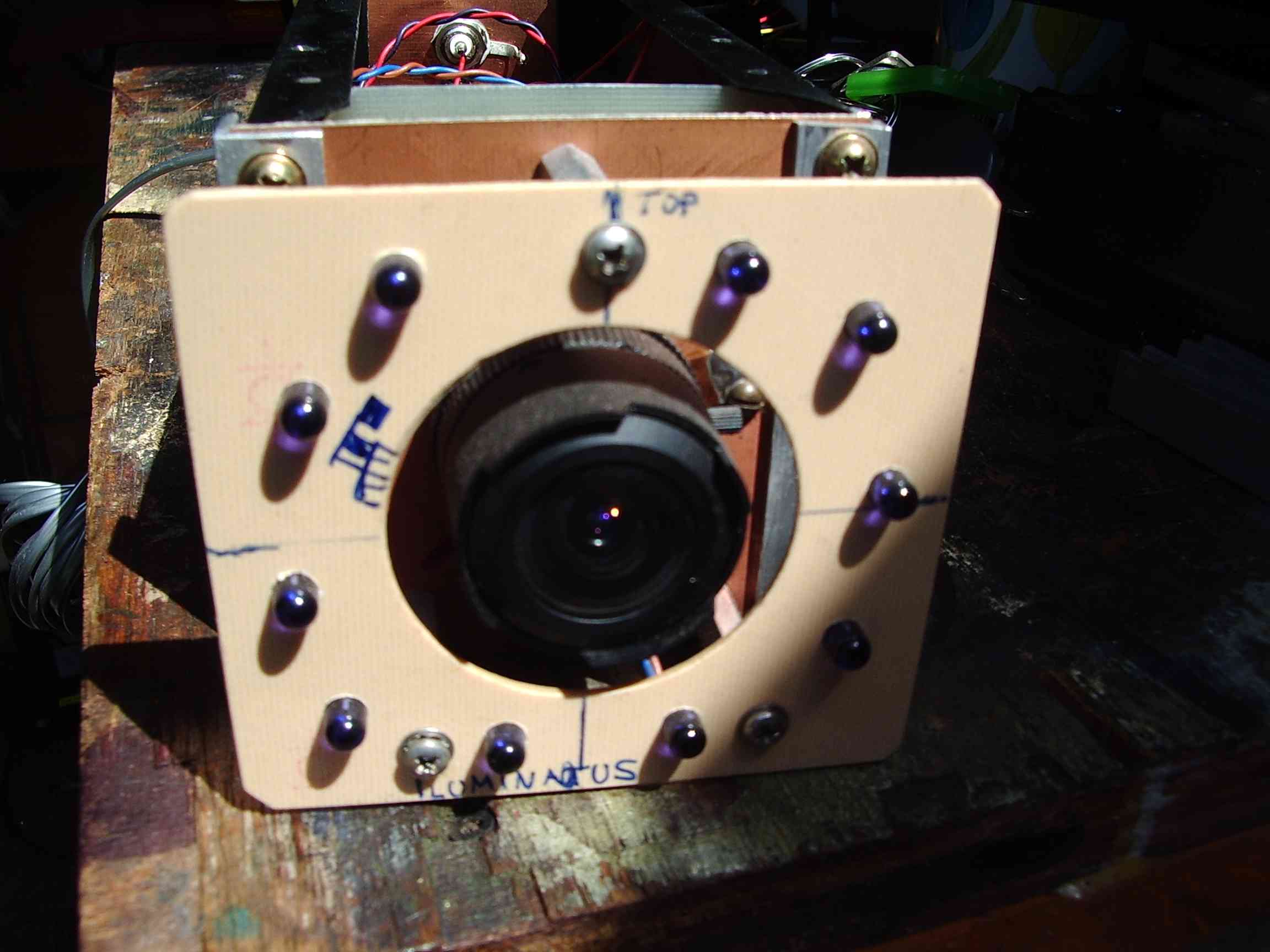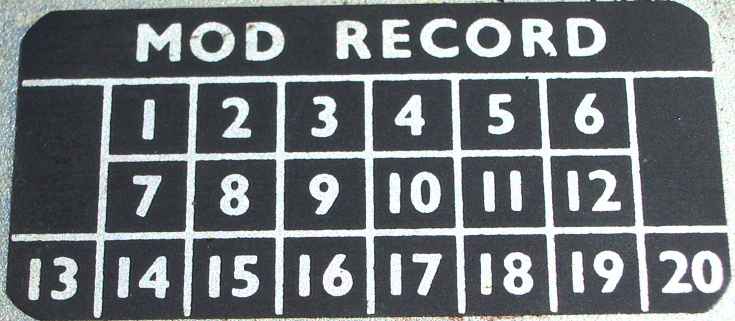This
camera project was motivated by a desire to have an infra red camera to
help align and evaluate communication laser test equipment. CCD
cameras can see in the infra-red spectrum down to about 800nm.
The lowest limit of their response, where they can just barely make out
a responsde extends to 1310nm which is emitted by communication lasers
for 9um fibre service. At this low freqency, their response is
very limited. Pity, though, it would have facilitated inspection of
fibres that I have to look after.
The infra red illuminator was added as an afterthought, and it has proven itself when watching the light shy geckos and other insect life going about their business at night.
The CCD module came with its own totally inadequate lens and totally inadequate mounting arrangements. The lack of any iris control or focusing is a real limitation of the little CCD modules which the securicam lens could address. The performance of most CCD modules is limited only by the lens.
My lens was found in a dumpster where it once would have found duty as a securicam lens.
The infra red illuminator was added as an afterthought, and it has proven itself when watching the light shy geckos and other insect life going about their business at night.
The CCD module came with its own totally inadequate lens and totally inadequate mounting arrangements. The lack of any iris control or focusing is a real limitation of the little CCD modules which the securicam lens could address. The performance of most CCD modules is limited only by the lens.
My lens was found in a dumpster where it once would have found duty as a securicam lens.
There
is nothing special in this design, the mounting arrangements are a
consequence of wanting to use the superior aperture and light gathering
power of the securicam lens rather than put up with the microscopic
lens provided with the CCD module. As I dont have a lathe I had to
improvise an arangement to position the lens with respect to the CCD
and align it. The PCB on which the CCD is mounted is mounted on
posts made from brass threaded rod and nuts serve as the spacing and
adjusting mechanism. Adjustment is a pain, but only has to be done once
as focusing is done with the main lens.
construction should be self evident from the pictures
The small pcb mounts a regulator and power supply reverse protection and misc wiring. The composite video output from the module allready incorporates a 75ohm line driver, I just added some zeners to give it static protection as well.
The bear CCD camera module was bought from Dick Smith some years ago, equivalent modules are readily available. Colour modules are not expensive, but may have lower resolution. Any Infra Red leds will work for this application. There is no need to switch them off, even in diffuse day-light they will improve the picture by illuminating dark spots. The leds are driven in series to their 50mA rating from the camera supply and have proven to be very effective.
